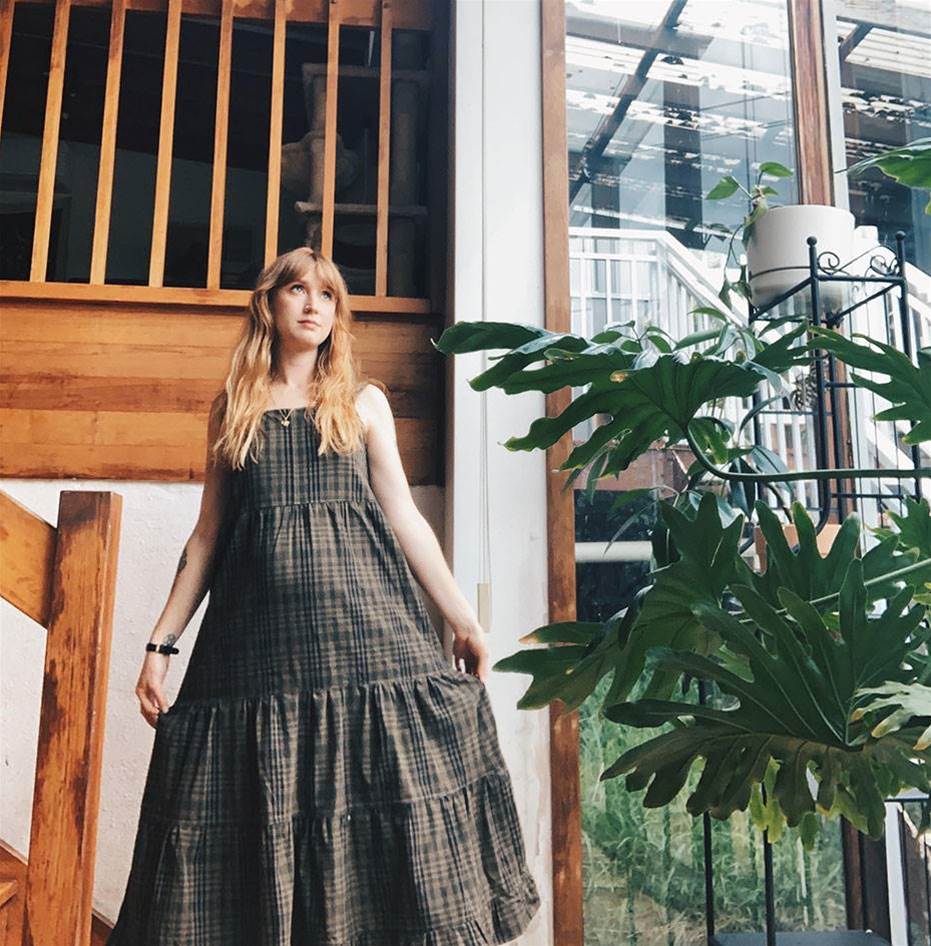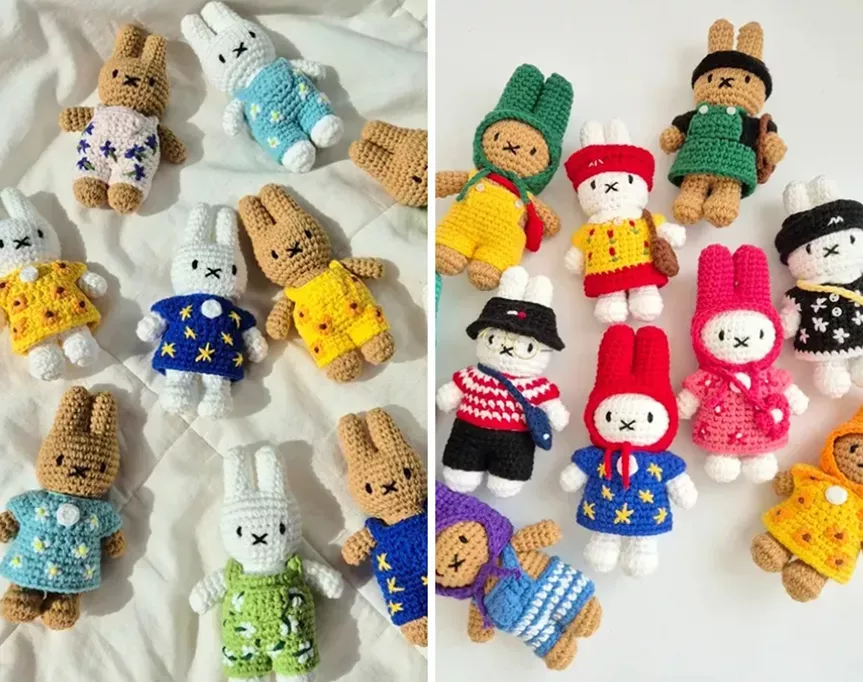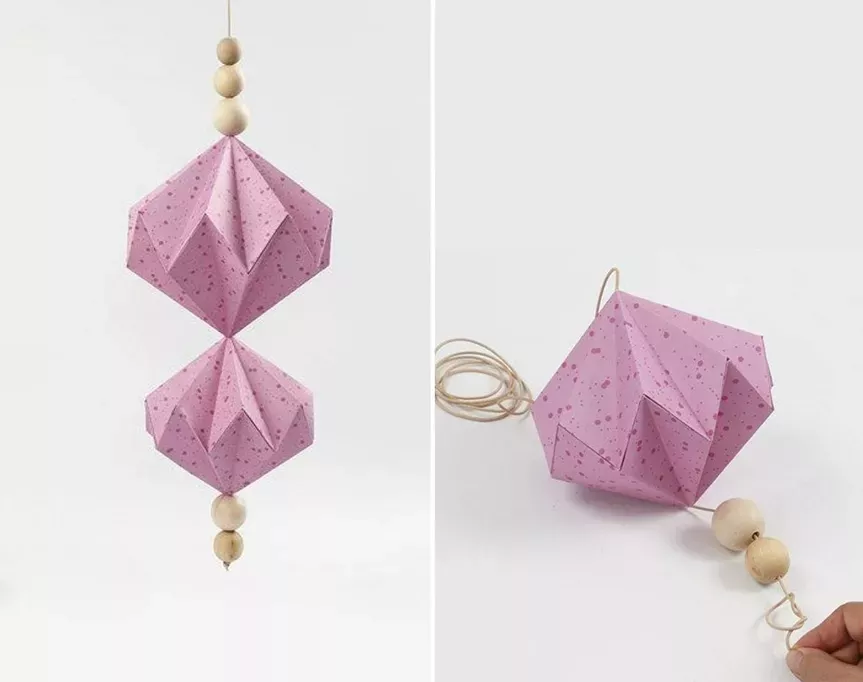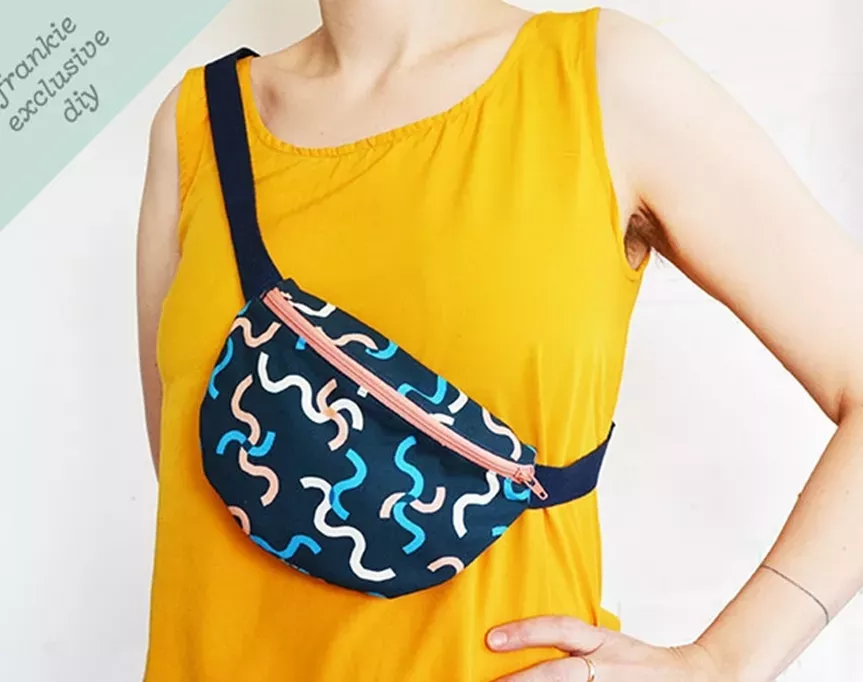why i sew – sewists share what they've learnt from making their own threads
Have you ever had a frock in your head you couldn’t spot at the shops? Or struggled to find that rad jumpsuit in your size? Or felt a bit too skint for sustainable brands? At frankie, making your own clothes has always been a top-notch solution to any style conundrum. But in the last few years, DIY fashion has reached new heights, with more folks taking up home sewing in search of a creative outlet, greener wardrobe or better-fitting duds. Anna Rodewijk Sole, a rep for The Fabric Store, told us that the retailer has seen an increasing number of sewing newbies at their stores, thanks in part to awareness among young folks about the environmental and ethical consequences of fast fashion. In the last two years, sales from their online shop have gone up nearly 200 per cent – wowee!
Sewing looks a little different than it did in your nan’s day, too. Heaps of home sewists (that’s the preferred gender-neutral term) now gather on Instagram to share their ‘makes’, trade sewing hacks and discuss important sewing-world topics like inclusivity and sustainability. And thanks to a whole new crop of independent pattern companies, it’s never been easier to source beginner-friendly clothing patterns for modern makers. If you’re curious about sewing your own duds, too, we asked a few sewists why they got started with a needle and thread, and what they’ve learnt along the way.
SHANNON FLAHERTY @rare.device @sewqueer
View this post on Instagram
Hi Shannon! Tell us about yourself. I'm an art history professor living and teaching in Indiana, USA.
When did you get behind the sewing machine? I learnt a little from my mum as a kid, but I really picked up sewing about seven years ago in my first year of grad school. I needed something that would engage my brain other than the reading and writing I was doing for school.
Has sewing changed how you see yourself? As a fat, queer person, sewing has been revolutionary. I'd so often settled for things that fit well enough and were close enough to my style; not having to do that anymore has made me feel more at home in and more joyful about my body. It's also helped me settle into my femme dandy style! No one was making loudly patterned button-front shirts that fit my body, but I've fixed that!
What inspired you to start @sewqueer? It was a frustration with ongoing assumptions in the online sewing world about who sewed and why. Folks often addressed groups as though everyone was a cisgender woman. Sewing anything that fell under "menswear" was assumed to be for our husbands or boyfriends. I never saw a pattern model who looked queer or gender-nonconforming in the way I, and so many of my friends, do. It felt really isolating. I decided to make a community for queer sewists to make connections and talk about our making in a meaningful and affirming way.
How does gender identity interact with sewing? All the choices we make about what to put on our bodies communicate to others how we wish to be understood, especially in gendered ways. Queer and trans folks are often much more aware of that process, because for us, signalling the way we embody our genders is often quite a conscious process, and sometimes a difficult one.
What do you discuss over at SewQueer? A whole range of things, from how to adapt patterns that might not be intended for our bodies to how to get out of sewing slumps to making gender-affirming garments like binders. But it's also not just about solving issues around gender presentation, it's also about celebrating the many and diverse queer and trans sewists out there.
Do you have any advice for sewing newbies? Make those projects that bring you the most joy – even, maybe especially, when they're extravagant and absurd and flamboyant and utterly impractical for your daily life.
Where can folks find inclusive sewing resources? On the SewQueer website, we have a small (but growing) directory of queer-owned sewing companies!
Do you have any favourite Instagram follows? I love every dress @roisinmuldoon makes; @bequeermakestuff does the best queer historical looks; @therotund has been killing it on the print front lately; and @palomaprojects has the dreamiest colour palette.
Favourite sewing hashtags? Our main tag is simply #SewQueer! It's a great way to find new queer sewists to follow. Others I like include #FatSewingClub, #SewInclusive, #SewInColor and #ChronicallySewn.
ROMY-KRYSTAL CUTLER @sewlike
View this post on Instagram
Hi Romy. Tell us about yourself, please. I'm a first-generation Aussie born and raised in Sydney, now living in the US with my husband and two kids.
Describe your sewing style? Bold, colourful and pretty with a street-style flare.
How did you get started? My in-laws got me a sewing machine for Christmas in 2015. I went straight to Spotlight, bought scissors, pins, thread and a cute vintage pattern from a Simplicity catalogue. We bought some IKEA fabric, too, since I always loved their prints. I'm completely self-taught through Google and Youtube.
What was the first thing you made? A vintage-style dress from Simplicity. I opened that pattern very confidently, thinking I was good to go since I had a sewing machine, thread and fabric. Boy, was I wrong. I had to Google every term and line of instructions; it was complete gibberish to me. I cried through most of it. If it weren’t for encouragement from my husband, I might not have finished, but once I did I was hooked! I made a dress that actually fit me, and I liked it.
What do you like to sew these days? My favourite thing to sew is quilted coats. There's just so much creativity involved in patching different pieces of fabric together.
What do you love about sewing? I love making things that I've got in my head, especially after years of shopping and settling for things that weren't exactly what I wanted. It's an amazing feeling to think of something and be able to create it. I get awesome clothes that feel authentically me, but I also feel a sense of accomplishment. It's total self-care.
Has sewing changed how you see yourself? It’s given me more confidence to be me. I remember once buying a new outfit for a work conference because my work colleagues had previously commented on my bright clothes. I ended up in a boring ensemble I felt terrible in. Now I dress with no restrictions. I don't follow trends, and if I do, it's a complete accident. I have a wardrobe I'm proud of.
What do you love about the online sewing community? The biggest surprise of all has been the camaraderie – people you've never met IRL saying "yes, you did it!", and giving you confidence to keep going and keep learning.
Do you have any tips for folks who want to start sewing? Do it! Just start. Don't worry about what you don't know. You'll pick it up as you go.
LORRAINE WONG @the.sewcialite
View this post on Instagram
Hi Lorraine! Tell us a bit about yourself. I'm originally from Adelaide, but moved to Sydney last year to study. I was a teacher, but now I'm doing postgrad studies in mathematics education.
How did you learn to sew? My mum taught me to use the sewing machine when I was around eight, though I was hand-sewing before then. I always made little things like pouches and bags, but it wasn't until 2015, when someone gave me the book Love At First Stitch by Tilly Walnes, that I started sewing clothes. The very next day after receiving that book, I sewed my first garment: a pair of pyjama pants!
Tell us about your favourite homemade garment. It would have to be a forest green silk velvet dress, just because it was such a nightmare to sew! I'm a bit traumatised by the experience and haven't sewn with velvet since!
You describe yourself as a 'slow fashion addict’. How does sewing play a role in that? Sewing a garment takes a fair bit of time – much longer than paying for something at the shops. When I started sewing, I would sew like crazy, without much thought about the wearability of the garment. That actually became wasteful because I wouldn't end up wearing them much. Now, although I'm still crazy about sewing, I put a lot more thought into how I'd wear a garment before making it. If I just sewed for the sake of sewing, I'd still be contributing a lot to waste.
How has sewing impacted your life? Sewing has made me feel powerful. After going through some personal trauma a couple of years ago, sewing became a source of therapy and healing. It also led me to the most wonderful, supportive sewing community on Instagram, which lifted me up in my darkest days.
We love your modern, elegant aesthetic. How does it match with people’s perceptions of sewing? I think a lot of people tend to think of home-sewn clothes as very 'folksy' and 'patch-worky' – even kitsch. They see sewing as an old-fashioned craft, so they're often very surprised that the clothes I'm wearing are home-sewn. After I shared my passion for sewing with my students, they asked me everyday if I made what I was wearing, and then they wanted to learn to sew, too.
What should folks know about the online sewing community? I love our body positive Measurements Movement, where many sewists have started to display their measurements in their bio. I get to check out how a pattern worked out on different bodies and find my own body twins!
Favourite Insta follows? So many! I love @melt.stitches, @coolstitches, @the.social.fabric, @_diydaisy, @endearingeveryday, @canyousewthisforme, @semi.joan, @sarah.eloise.sews.
MOLLIE CLEGG salon owner @lolafortune_ Tell us a bit about yourself. I run a little hair salon in Brunswick, Melbourne. Currently, I’m on maternity leave, navigating all that comes with being a first-time mother to a newborn.
Tell us a bit about yourself. I run a little hair salon in Brunswick, Melbourne. Currently, I’m on maternity leave, navigating all that comes with being a first-time mother to a newborn.
Are you a crafty type? I’m always aspiring to be more crafty than I am. I am the queen of taking on new hobbies and projects and not following through – that is something I’m working on.
You started sewing again recently. What brought you back to it? I first started sewing in high school. I was a teenager with not a lot of money who loved nice clothes, so I figured learning to make my own could be a cost-effective solution. Unfortunately the hobby didn’t stick. I only picked it up again about 18 months ago from a desire to minimise the environmental impact my fashion choices were having, alongside a pull to have a creative endeavour outside of my career.
What have you made so far? So far I’ve stuck to simple, beginner-friendly patterns that are quite forgiving. Nothing too structured. I’ve chosen to sew using natural fibres such as linen and cotton.
Have you made anything you’ve really loved? My favourite thing that I’ve sewn would have to be my Peppermint and Elbe Textiles Wide Strap Maxi Dress. I used a hack to give it ruffled tiers. I made this during lockdown when I had a lot of extra time, and really committed to slowing down and making everything as perfect as possible.
What’s your tip for beginners? I find following patterns extremely helpful, and then I will search for tutorials on YouTube when I get stuck. In the beginning I would stick to sturdy fabrics such as linen, and go slow.
What do you love about sewing? Sewing has become a mindfulness practice for me. An opportunity to become really present, to slow down, to focus on what’s in front of me and get into a flow state. It’s such a wonderful creative outlet – you can make really beautiful, high quality clothes that look professional even if your skills are limited. It invites you to be more thoughtful in your consumption, and to create timeless pieces that you will cherish for many years.














.jpg&q=80&w=316&c=1&s=1)













.jpg&q=80&w=316&c=1&s=1)










